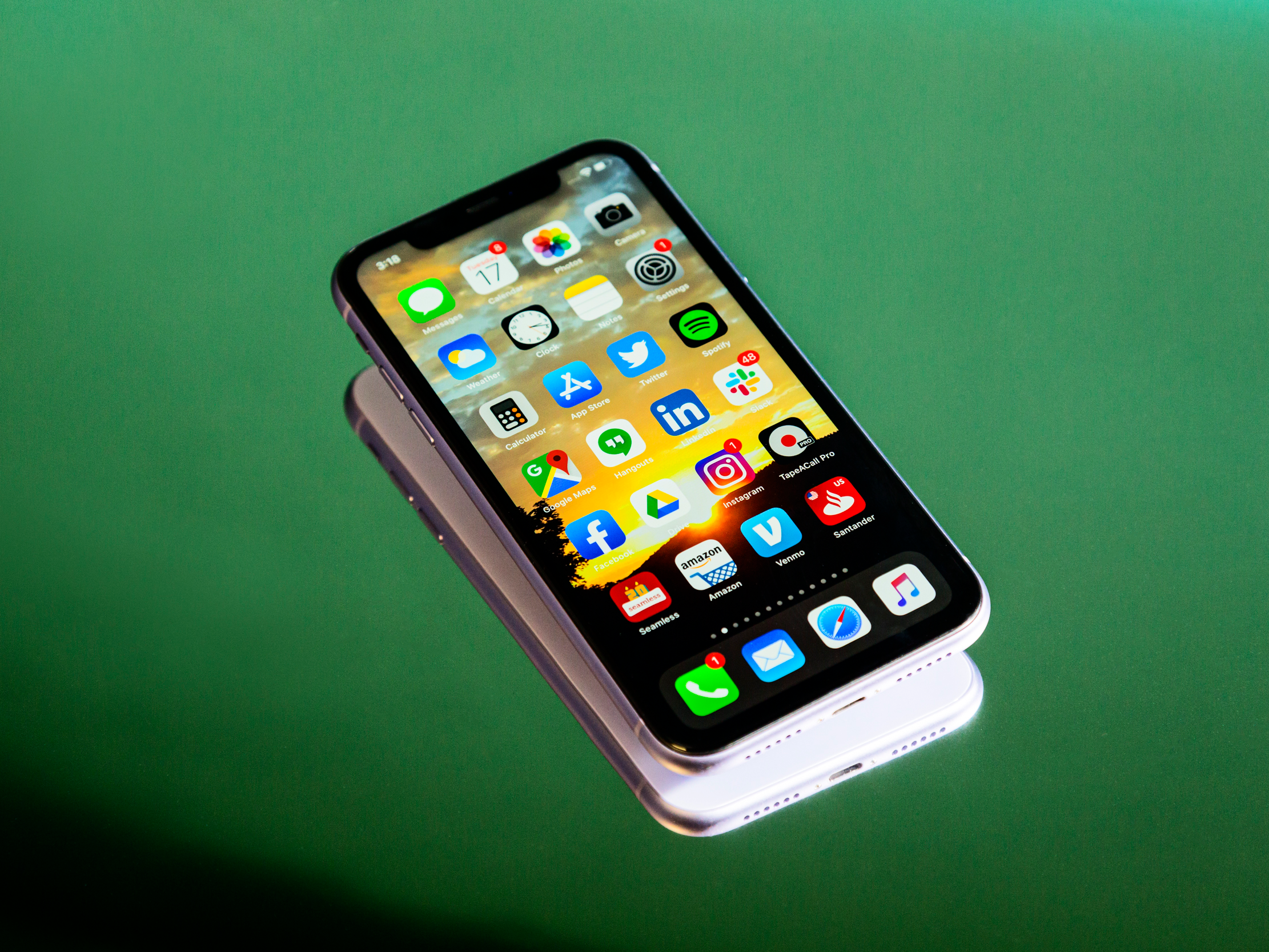- With iOS 14, Apple is finally making big changes to the iPhone’s home screen and how we interact with apps.
- The update will allow you to customize the home screen with widgets and introduces a new way to manage apps by automatically sorting them into categories.
- iOS 14 also brings App Clips: a feature for using part of an app when needed without having to fully install it.
- It shows that Apple is acknowledging that the smartphone experience is in need of an update, especially as more become used to accessing the internet more immediately though wearables and smart-home speakers.
- Visit Business Insider’s homepage for more stories.
The iPhone has changed in many ways since its debut in 2007, evolving from what was essentially an iPod touch with a cellular connection to becoming one of the most advanced personal computers in the world.
But there’s one thing about the iPhone that hasn’t changed much: its home screen.
Apps have always remained arranged in a grid of icons identical in size. Using them often means tapping an icon to launch an app and pressing the home button or swiping up from the bottom of the screen to exit.
That’s about to change in some important ways when iOS 14, Apple’s next major software update, rolls out this fall. Apple is implementing a slew of changes to the iPhone’s home screen and the way apps work that will make the iPhone’s home screen more customizable and dynamic than ever before.
There are three major changes coming in iOS 14 that will make using your iPhone feel different:
- New widgets that come in different sizes, show more information, and can finally be pinned to the main home screen.
- The App Library, which is essentially a smart folder Apple creates that automatically organizes and sorts your apps into categories.
- App Clips, a feature that will let you use one specific part of an app without having to install or launch the full program.
The iPhone's home screen finally gets an update

The improved widgets may be one of the biggest ways in which the iPhone's interface will change with iOS 14, as it will better optimize the iPhone's software for quick, glanceable interactions much like the Apple Watch.
Not only are Apple's new widgets available in different sizes, but they also have a refreshed design that shows more information. In iOS 14, you'll be able to drag these widgets over to your main home screen so that you can make your home screen more than just a grid of apps - similar to Android.

That means you'll be able to see information like weather forecast or progress toward your activity goals just by looking at the home screen rather than swiping to the "Today" view or opening an app.
Apple is also attempting to make the iPhone's operating system a little more intuitive thanks to its Smart Stack widget, which as its name implies includes multiple widgets piled on top of one another that you'll be able to swipe through.
What's most interesting, however, is that this "stack" can alternate the widget shown on top depending on the time of day based on the information that Apple thinks is most relevant to you. You might see calendar appointments during the workday in the afternoon, for example, and then the activity widget toward the end of the day.
No more digging through your apps to find the right one

Apple is also introducing a new feature called App Library in iOS 14, which intelligently sorts your apps into buckets arranged by category like entertainment, social, and recently added, among others. The apps you use most will also remain at the top of the folder so that you can access them with just a tap rather than having to dig through these categories.
The addition should make it much easier for those with dozens and dozens of apps to find what they're looking for without having to manually sift through them. Currently, the most similar feature offered is Siri Suggestions, which recommends apps that you may want to use based on how often you use them, among other factors.

The other major update that will change the way you use your iPhone is called App Clips, which is essentially a tiny portion of an app that you can use whenever you need it. The idea is to avoid having to download apps that you may only use once or on occasion.
Apple offered some use cases for App Clips at its Worldwide Developers Conference on Monday. Instead of downloading a specific app to pay for parking, for example, an App Clip would appear when holding your phone near the payment machine.
In addition to real-world use cases like paying for parking or buying a cup of coffee, App Clips will also work on the web and in iMessage. If a friend sends you a link to artwork purchased on Etsy, an App Clip could enable you to buy the painting without having to download the full app to purchase, for example.

The concept isn't entirely new. Google offers a similar feature through Android's Instant Apps, and the concept of using a real-world activation point to trigger an app or smartphone feature has existed for years through QR codes. But the introduction of App Clips, if widely embraced by developers and consumers, could make these types of interactions the norm rather than the exception.
A step forward for the iPhone's software

Taken together, these changes make it feel like the iPhone's software is finally catching up to the ways in which many people use their smartphones and other tech devices today.
At a time when many are used to glancing down at a smartwatch to check the weather or asking Alexa to place an Amazon order, the notion that some of these tasks may still be several taps and swipes away on our smartphones has started to feel a bit dated.
Put bluntly, the rising popularity of wearable devices and smart home speakers over the last five years has allowed for even more immediate access to the internet than smartphones have provided, and iOS 14 may be Apple's way of catching up. Simply being able to download and launch apps won't be enough; the next evolution of the smartphone will likely involve our phones being more proactive about serving up the right information when we need it.
It's a goal that both Apple and Google have seemingly been building toward for years, and iOS 14 is the iPhone maker's next big step in that direction.

